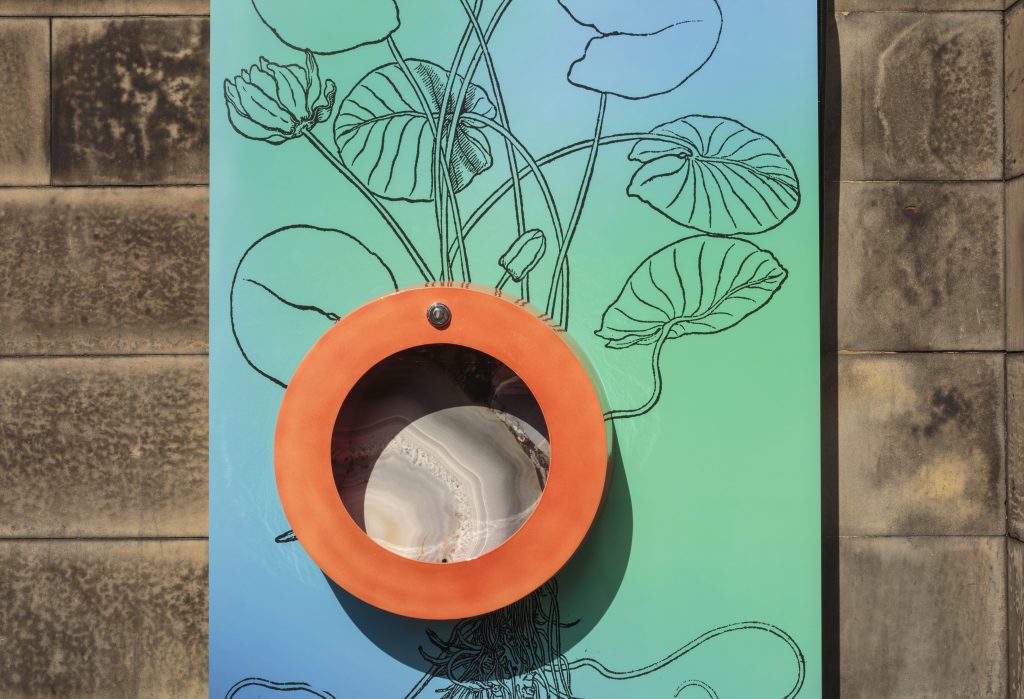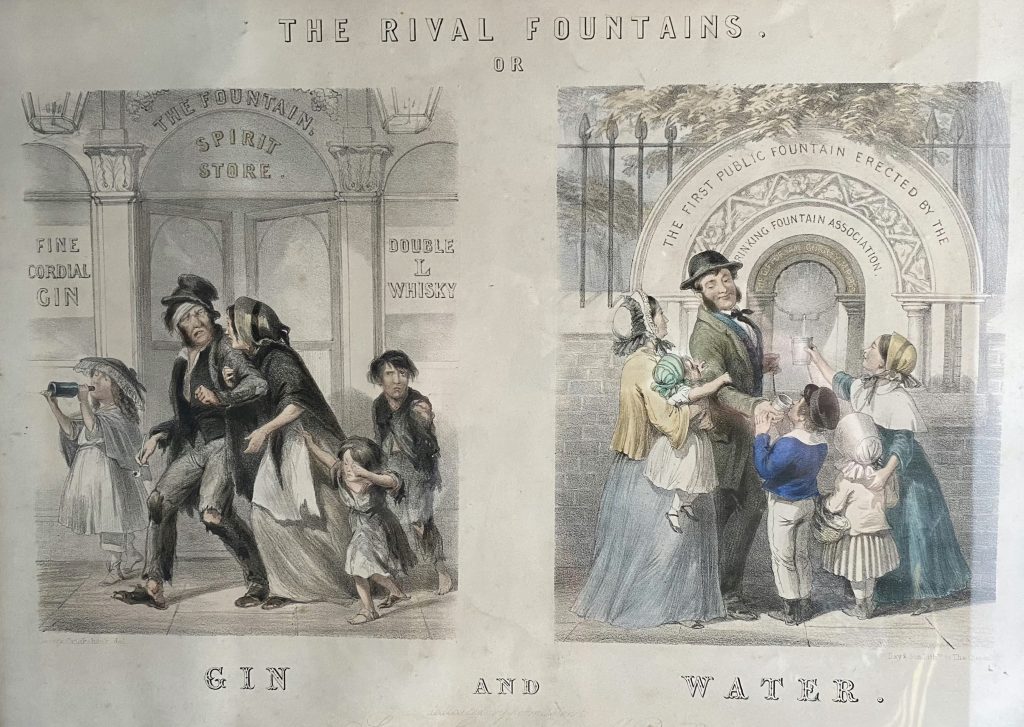DES has long wanted to revive the drinking fountain. Once a common sight across Victorian Britain, the 19th century fountain was invariably a beautifully crafted, eye-catching affair. In more recent years, the drinking fountain is often a very matter-of-fact object. In the spirit of celebrating free and clear drinking water and the vitality and brilliance of contemporary designers, DES has commissioned a series of fountains, with the aim of enabling thirsty folk to fill up their bottles and reduce the use of plastic bottles.
WELL by Tania Kovats
Commissioned by DES, WELL was first shown at our DES Showcase 2019 in Edinburgh.
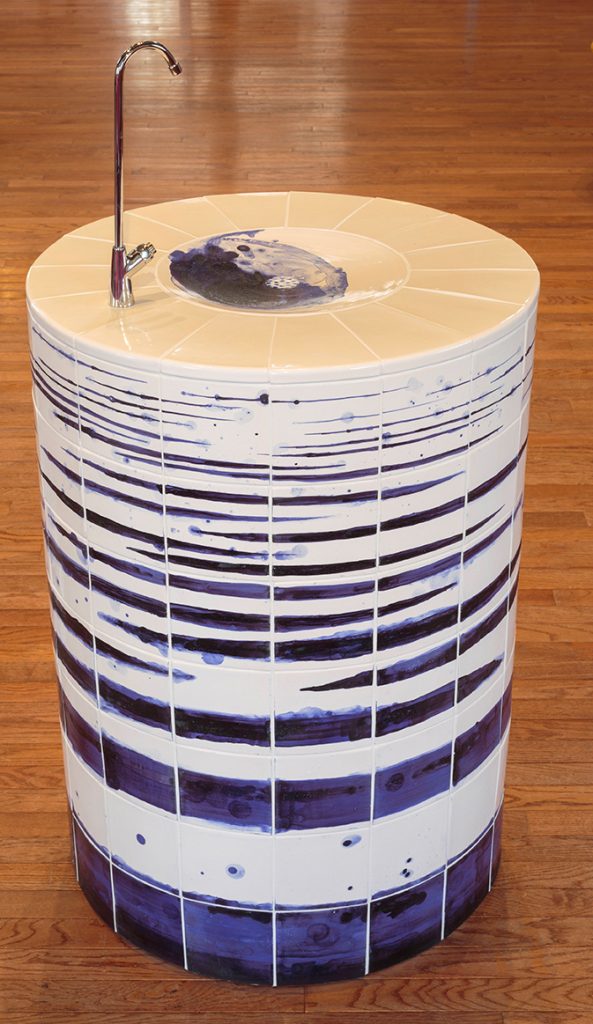
Tania Kovats is an artist based between Devon and Dundee. Her practice has long explored the landscape, drawing and making. In 2019, knowing of her deep interest in water – Rivers is a permanent commission at Jupiter Artland and in 2014 she exhibited Oceans at Edinburgh’s Fruitmarket gallery – DES invited her to design a drinking fountain.
WELL is a circular drinking fountain made of tin-glazed earthenware. The handmade tiles were made at Glasgow Ceramics Studio and each tile has been handpainted by Tania. Loading her brush with blue cobalt, Kovats has taken paint across each tile, leaving a watery flow of blue. Some tiles are darker and more densely filled with colour, on others the lines of cobalt blue are slender and the watery paint has ‘pooled’, reminiscent of ink blots.
Water has been at the centre of my work for some time now. It shapes my sculptures, writing, drawing and thinking. This has meant reflecting on geopolitical issues and critical environmental concerns alongside swimming out into deeper waters questioning what our liquid selves might be. I am currently making works that arise from experiencing water as a boundary. This was something I could literalise when I walked the River Tweed where the river forms a national boundary between England and Scotland. WELL is a work where I celebrate the simple act of taking water into ourselves, drinking water, a basic human right, critical for life, an everyday luxury in our part of the world, and can be done without causing harm environmentally if we reduce the use of single use plastic water bottles. I am currently making plans to visit some of the long marked healing wells in Scotland. In some small way public shared drinking fountains help remind us that all our waters are connected.
Tania Kovats
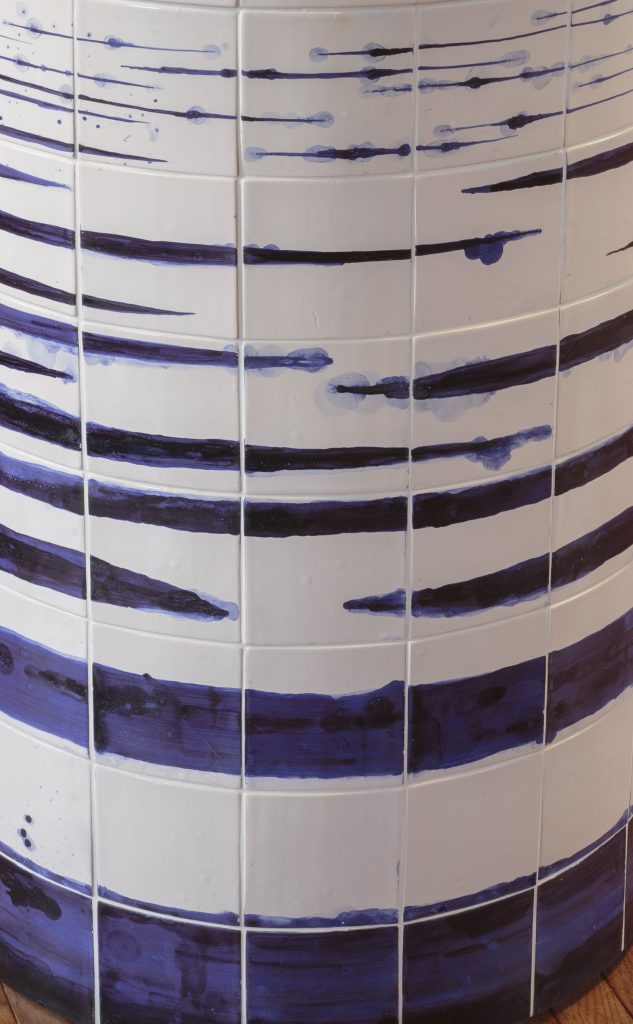
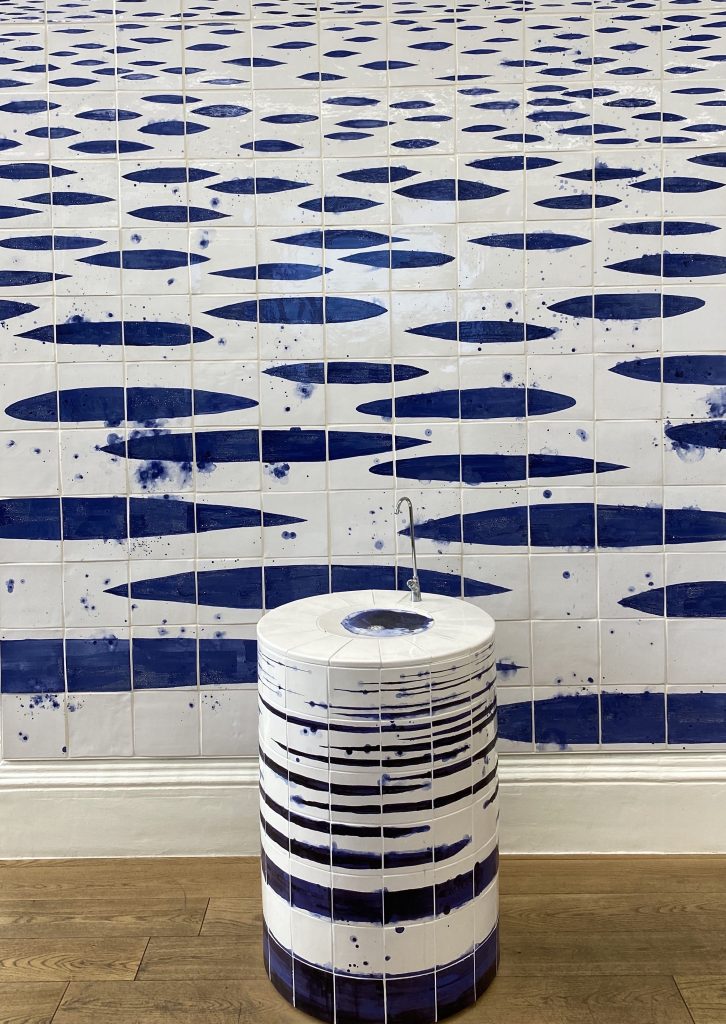
In 2020, the UK Government Art Collection, acquired WELL and it is now installed in the reception of the Department of International Trade in Whitehall, where it offers visitors and staff fresh drinking water. Tania was later commissioned to create a tiled backdrop to WELL, entitled SEAMARK. And we were delighted when Edinburgh’s Fruitmarket gallery, commissioned Tania to create a further WELL to be sited in the newly renovated cafe in 2021.
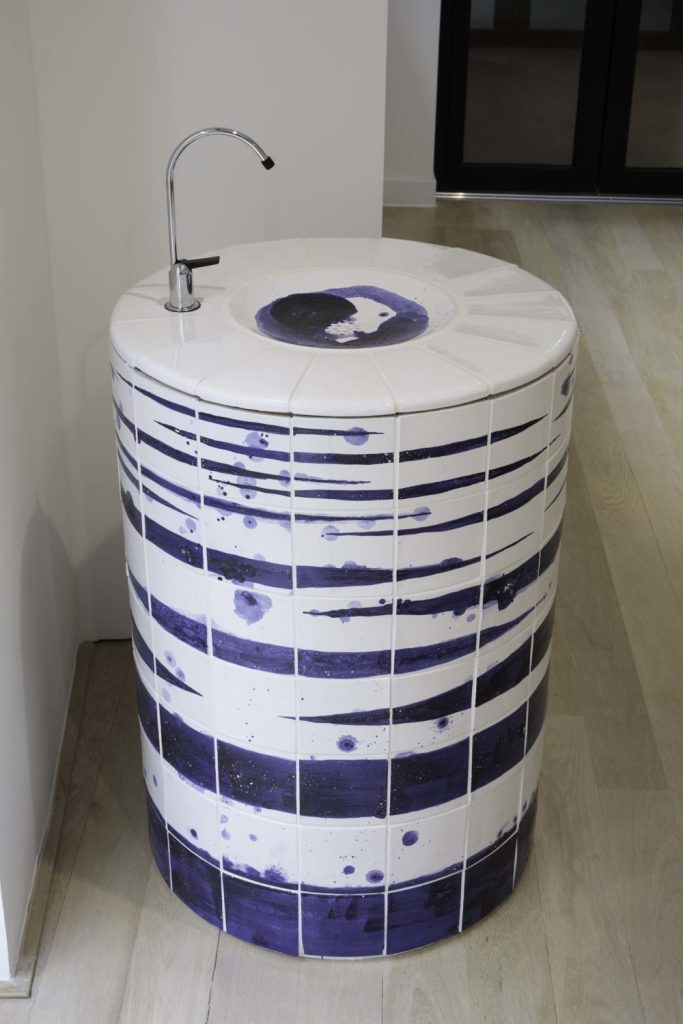
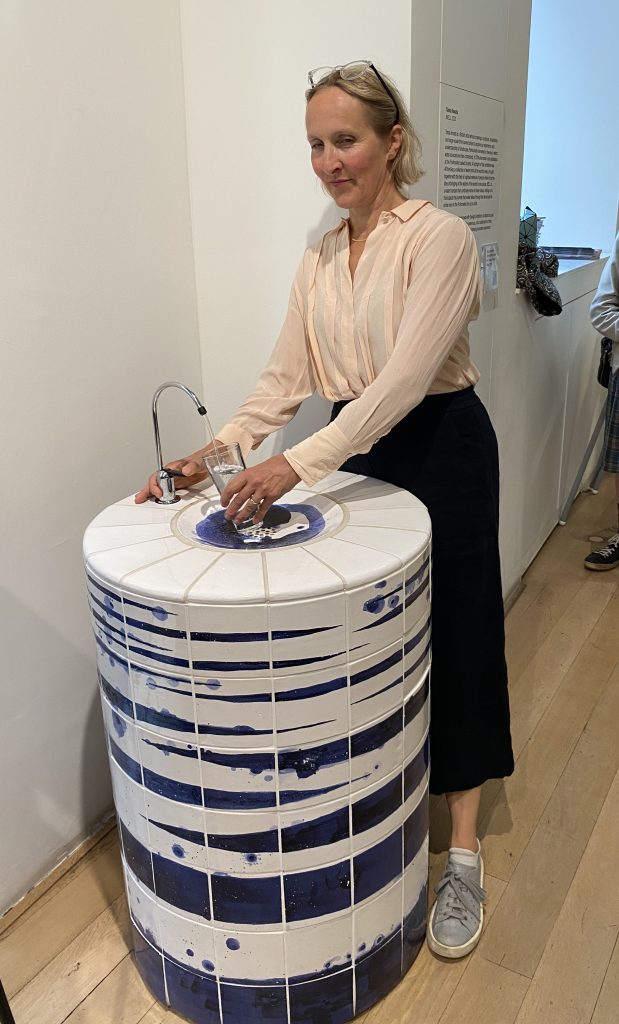
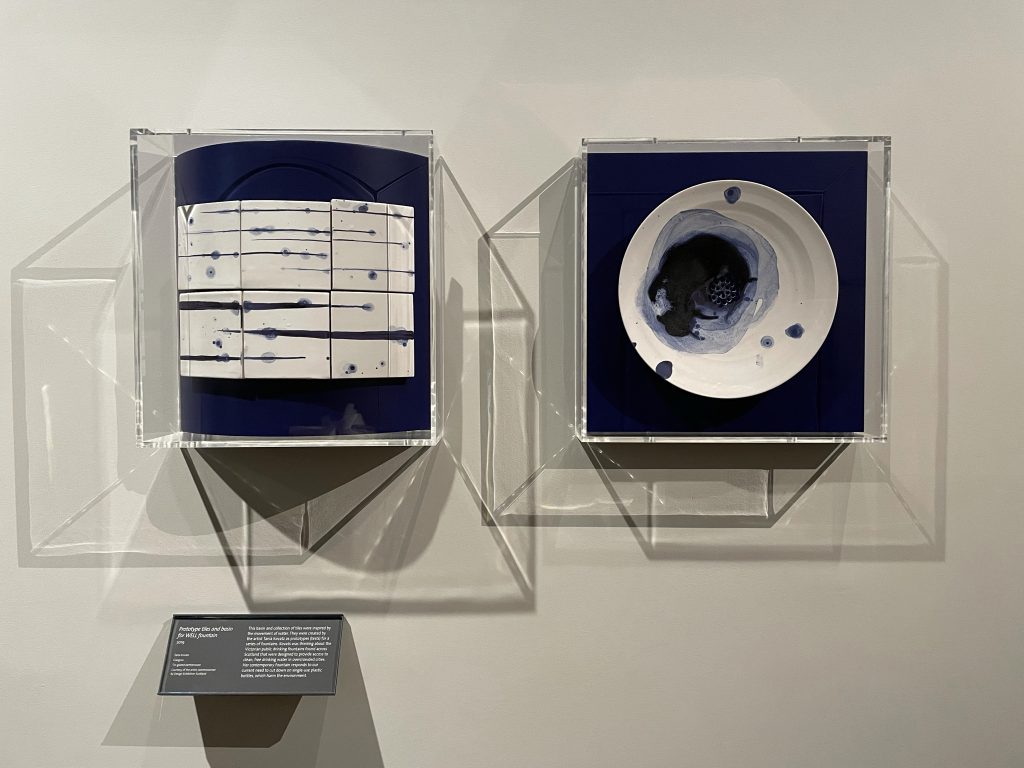
Proposal for a drinking fountain with trough (outdoors)& Proposal for a drinking fountain (indoors) by Bad Furniture – Laura Aldridge & James Rigler
The fountains were commissioned by DES and shown at DES Showcase 2019.
Bad Furniture is a collaborative practice of two artists, Laura Aldridge and James Rigler. Given a brief to design a contemporary fountain they first looked at the public drinking fountains of the past. Often exuberant, they felt today’s fountains and top-up taps are mostly modest, mundane and frequently dull affairs. They wished to inject a sense of exuberance and the celebratory into the fountain, to create a functioning yet beautifully sculptural form.
Their Proposal for a Drinking Fountain combines the playful and the pragmatic. A central ceramic circle signals the water’s source, its dimensions allowing the user to easily fill up their water bottles. The curved backdrop is sheet aluminium, brilliantly heralding the fountain’s presence. Their Proposal for a drinking fountain (indoors) shows cavorting individuals, a detail from a woodcut by the German artist H S Beham from 1536, entitled The Fountain of Youth.
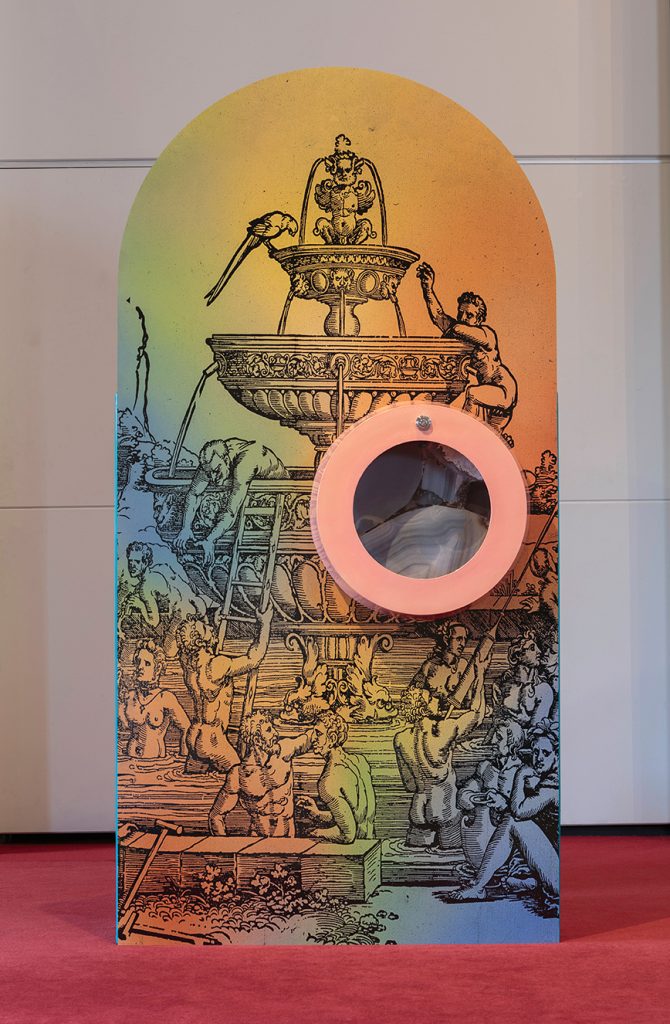
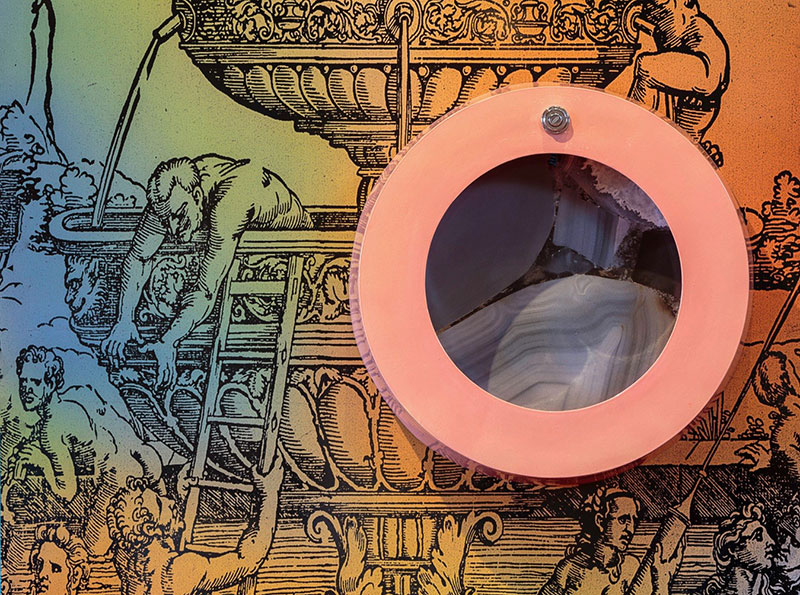
Bad Furniture’s drinking fountain for the outside, is likewise exuberant and celebratory. On the ground is a semi-circular trough for dogs, the overflow water then travels down along the stone gutter. The backdrop is sheet aluminum, brilliantly heralding the fountain’s presence. The image is taken from a botanical drawing by the 16th century German theologian, Otto Brunfels.
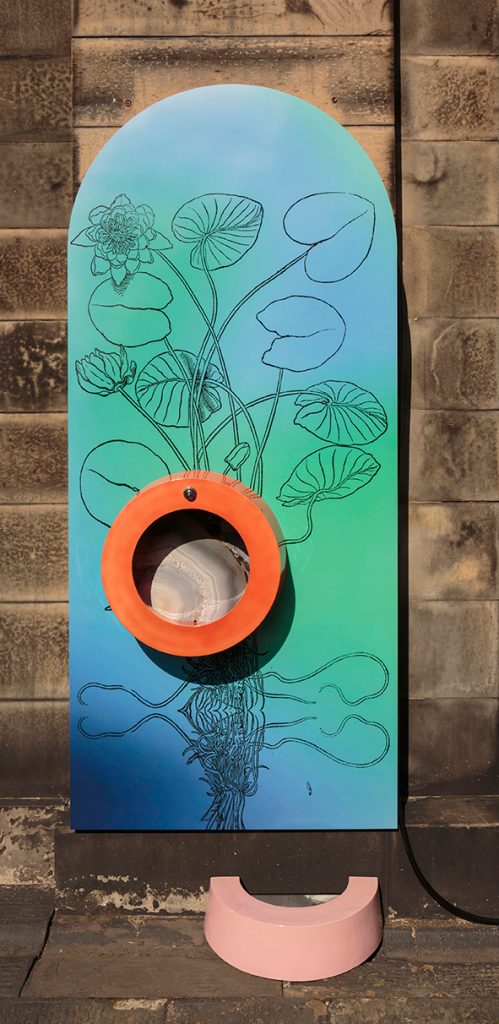
Digital print on aluminium, glazed ceramic, plywood, pipework and fittings, water
255 x 110 x 50 cm
